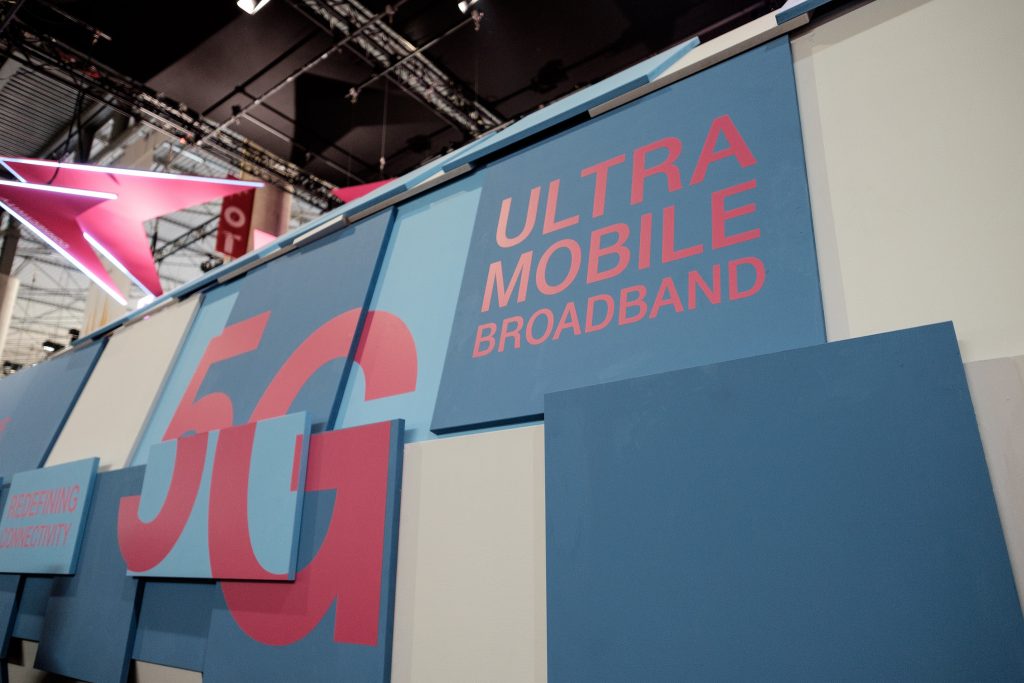Remember when cell phones were actually used as phones? Back then, their primary use was to call other phones and send the occasional SMS text message. You could even play a short game of snake. Ever since the good old days, smartphones are constantly pushing the boundaries of performance with bigger screens, better cameras, more memory and faster processors.
But these advanced features and technical abilities would mean nothing without the power of the network behind them. The connection to a telecommunications network is what breathes life into our phones. In essence, the stronger the network, the better the phone usage. This is why we are so excited that 5G will soon be here. 5th Generation mobile networks will undoubtedly change the way we use our phones for the better.
Let the network do all the work
The network is what carries signals to our phones. These signals are then translated into services we enjoy and love: voice, video, data etc. Traditionally, each service had a separate network: TV signals were transmitted on broadcast radio channels or cable. Voice over a telephone network. Data on computer networks and so on.
Advances in broadband technologies and high-speed information processing allowed for integrating all these services into a single network. These networks are known as mobile broadband networks, and they allow our phones and modems wireless access to the internet.
 Small cell antennas on a lamp post. (Photo Credit: Tony Webster)
Small cell antennas on a lamp post. (Photo Credit: Tony Webster)
A walk down memory lane
To better understand 5G and its possible impact on our day-to-day phone usage, let's take a walk down memory lane. The first generation of mobile networks allowed us to roam around with phones in our pockets, having voice conversations from wherever we chose. 2G added SMS text messaging capabilities, which opened up a new form of human communication.
3G introduced the data revolution into our phones. Ever since then, we are connected to our emails and favorite websites at all times. 3G Wireless data also introduced the app revolution into our lives and arguably turned our cell phones into a true extension of ourselves.
4G made everything faster and more reliable, hooking us onto streaming, live gaming and on-demand video services directly from our handsets. What started out as a mobile telephone is now truly a capable and smart handset.
What is 5G and what will it bring with it?
5G is a proposed set of properties for the next generation of mobile networks. These networks are currently in development by multiple operators in parallel. But instead of competing with each other, operators (and other key players of the mobile world such as vendors, manufacturers, and researchers) are working together to “ensure the successful commercial launch of future mobile broadband networks through a roadmap for technology and friendly user trials.”
The Next Generation Mobile Network Alliance unites them all. The NGMT is an open forum that evaluates candidate technologies and tests them. They then come up with a standard set of properties and protocols that will allow all 5G networks to actually do their job and network with each other, working together flawlessly under one common set of rules.
The final 5G specifications have yet to be agreed upon, so no one knows what 5G will bring with it. However, the NGMT’s proposed technologies allow us to speculate about what advances the 5th Generation of mobile broadband networks will introduce into our lives.
 Photo Credit: Kārlis Dambrāns
Photo Credit: Kārlis Dambrāns
Hold on to your phones - they’re going to be fast
One thing is for sure - 5G will be fast. Really fast. Tests conducted by AT&T have already achieved speeds of 6 Gbps, meaning 4K videos will become popular on every handset.
NGMT specifications also recommend low latency, drastically cutting the time between request and response by 75%. In everyday terms, this means our smartphones will be much better at handling multiplayer games, live video calls, IoT applications and such.
Get with the 5G jargon
There are many 5G buzzwords flying around. These new technologies have not yet made the final cut into the 5G specs, but everyone seems to think they have a good chance. We will explain the most popular ones:
Small cells - 4G LTE is supported by tower top radio transmitters or cell phone towers. Small cells are mini-towers that are fixed on light poles and run on considerably less power. An army of small cells will likely descend on major cities in the next coming years, creating the 5G network.
They will be faster, but their signal is weaker and cannot penetrate physical barriers such as walls and trees. Therefore, they will be located closer to the ground. Their strength is in numbers.
MIMO or Massive Multiple-Input Multiple-Output is the technology that allows our 5G miniature cell towers to send and receive data simultaneously at much higher rates than current transmitters.
Beamforming is a group of algorithms that will choreograph the MIMO signals in a way that they don’t interfere with each other. Beamforming combined with MIMO will amplify the small cell signals.
I can’t wait! When will 5G be here already?
All this is happening very soon. Verizon is set to test the new 5G network in 5 cities by the end of 2018, while AT&T plans to penetrate the smart home market with a 5G internet package that will allow streaming of DirecTV content.
Conclusion: phenomenal cosmic power, itty bitty living space
All this technology leads to the following observation: 5G will perform amazingly well, but all its power will be confined to small clusters. 5G will likely be introduced in highly populated urban centers, such as stadiums, parks, and malls, working alongside existing 4G LTE networks to enhance our mobile data experience in specific locations. All the while, 4G will also advance in parallel.


